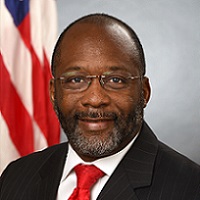 By Dr. Vindell Washington / Principal Deputy National Coordinator
By Dr. Vindell Washington / Principal Deputy National Coordinator
Twitter: @ONC_HealthIT
As I announced at our recent Annual Meeting, hospitals across the country continue to make progress toward the goal of ensuring that health information flows where it is needed the most. Today, almost all U.S. non-federal acute care hospitals have certified electronic health record (EHR) technology and 82 percent are electronically exchanging laboratory results, radiology reports, clinical care summaries, or medication lists with ambulatory care providers or hospitals outside their organization – double the percentage from 2008.
Despite this upward momentum nationally, a new ONC data brief suggests that small hospitals, rural hospitals, and Critical Access Hospitals (CAHs), have not been able to advance as quickly when it comes to the interoperable exchange and use of health information. Specifically, rural hospitals had approximately half the rate of engaging in all four domains of interoperability –electronically finding, sending, receiving, and integrating – compared to suburban and urban hospitals (15 percent vs. 34 percent, respectively). CAHs had significantly lower rates of engaging in the 4 domains of interoperability compared to non-CAHs as well.
While further analysis is needed to better understand the causes of these specific disparities, ONC is committed to ensuring that all hospitals have secure access to health information when and where it is needed to support our national goals of achieving better care, smarter spending and healthier people. Growing up in a small town in Virginia, I understand the vital role that health care providers in rural settings play in delivering essential health services, and the unique challenges that providers and individuals living in rural areas face. For example, more than half of the population in rural areas, and nearly two-thirds of the population in tribal areas, lack access to advanced broadband services.
A key tool for reducing health and digital disparities overall in these communities is improving the rural health information technology (IT) infrastructure. Last year, ONC released two important strategic documents, the Shared Nationwide Interoperability Roadmap and the Federal Health IT Strategic Plan, which are designed to help the entire nation improve care through the use of secure interoperable health information technology – and that includes providers in rural communities across the nation, including small, rural hospitals and CAHs.
The Roadmap outlines specific approaches to tackling the challenges faced in rural health care through patient access, eVisits, telemedicine, and at-home monitoring. The Strategic Plan also details how we are engaging with Centers for Medicare & Medicaid Services (CMS), the U.S. Department of Veterans Affairs (VA), the Health Resources and Services Administration (HRSA), the Federal Communications Commission (FCC), and the Indian Health Service (IHS) to leverage health IT to assist providers practicing in rural and tribal areas.
In particular, we are focusing on increasing access to financing for everything from brick-and-mortar infrastructure to software and broadband connectivity. For example, on behalf of the White House Rural Council, the U.S. Department of Health and Human Services (HHS) and the U.S. Department of Agriculture (USDA) have been leading a Collaborative Rural Health Financing initiative to link health care providers serving rural, poor and tribal communities, as well as communities with large populations of rural veterans, with financing necessary for facility upgrades, telehealth and health information exchange. Between 2012 and 2014, this HHS and USDA led initiative generated approximately $1 billion in rural health care financing across 13 states. As of May 2016, we have expanded this initiative to 18 states.
In addition, on behalf of the Broadband Opportunity Council, we have partnered with the FCC, USDA, the Department of Commerce, the Appalachian Regional Commission, HRSA’s Federal Office of Rural Health Policy, and others, to convene Federal and non-Federal partners to address challenges associated with the broadband connectivity necessary for telehealth and health information exchange. Additionally, ONC has partnered with the VA’s Office of Rural Health on various initiatives under the White House Rural Council umbrella to support interoperable exchange of health information between small, rural hospitals, Critical Access Hospitals, and VA hospitals, since many rural veterans seek care both within the VA system and at their local health care provider or hospital.
To learn more about ONC’s rural health activities, or to bring any of our rural health initiatives to your state or organization, please contact ONC.
This post was originally published on the Health IT Buzz and is syndicated here with permission.
